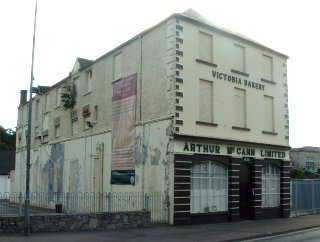Fortune – and highly-placed friends – favoured Nicholas Bagenal in the year of 1550.
He was appointed to the Irish Privy Council, the supreme governing body of English rule in
Up until the early Tudors, courtesy of the Pope (the only English Pope, Adrian VI not co-incidentally, in 1155) under the bull Laudabilitere the English monarch was Lord of Ireland. When Henry declared himself, in defiance of the Pope, Supreme Head of the Church in
The Ministers of Henry’s minor son Edward were even more determined than him to crush the power of the (Catholic) Church and its institutions. There was no pretence at impartiality in State documents: a preamble to a Rent Roll of ‘Nicholas Bagenal’s estate’ claims… ‘These lands were granted unto Sir Nicholas Bagenal, Knight Marshal of Ireland, by King Edward VI at which time the said land (in effect) was possessed with rebels …’ The so-called rebels were the Cistercian monks.
Under the settlement negotiated in 1543 with the previous administration by Arthur Magennis, the Abbey had become a college, its abbot the warden and his monks, vicars choral. They had the rent minus a small payment to the Crown.
Soon after Bagenal arrived, the pressure was further heaped upon them with the carrying out of two Inquisitions. Under these, we are informed that the one-acre site contained .. ‘a church with steeple, a chapter house, a dormitory, a hall, an orchard and a garden’.
Strangely no mention, you will notice, of an Abbot’s House! This building, we surmise, had already been seized by the Marshal and its occupants removed! In this way did Nicholas Bagenal come by his ‘new Castell’.
The only (extremely unlikely and illogical) alternative is that Bagenal instantly had the strongest and clearly the largest building in Newry demolished, so that he could build from scratch – on the same site – his own Castell. This at a time (see Bagenal biography here) when as Marshal of
What makes this even more unlikely is the difficulty – two full centuries later – that workmen had in trying to demolish its staircase tower (according to the O.S. Memoirs 1834-36… ‘It was no easy task to take down the massive stone staircase …… men employed found it necessary to blow it up with gunpowder’).
In relation to the other buildings of the dissolved Abbey, the reader is invited to study the disputed ‘Lythe’ map of Newry (c. 1570 – a copy is on p42 of Canavan’s
This is just one more anomaly of that disputed paper, to my mind. It clearly would make no sense to raze all the buildings of the Abbey – and surely some would have survived after just twenty years?
… Greencastle & Bagenals ? …
… more later …
